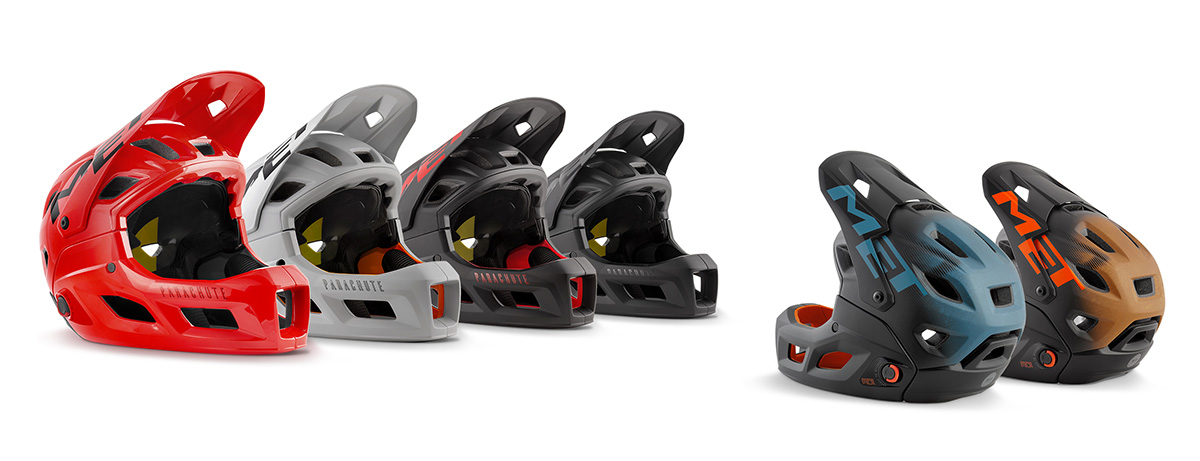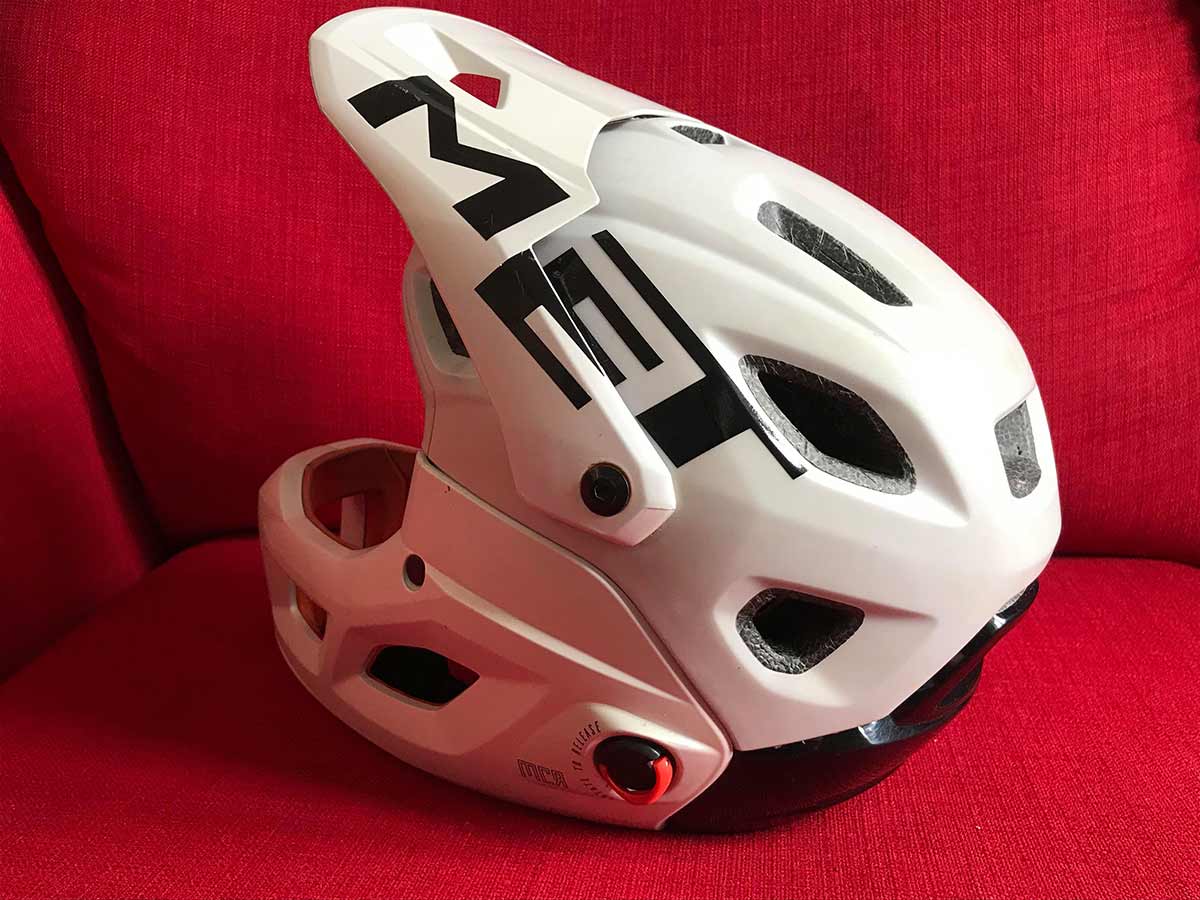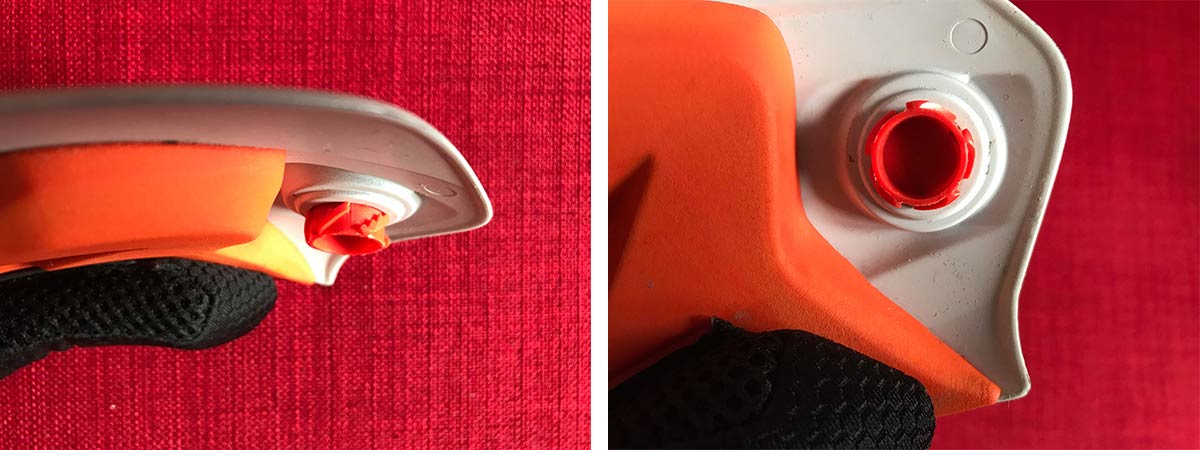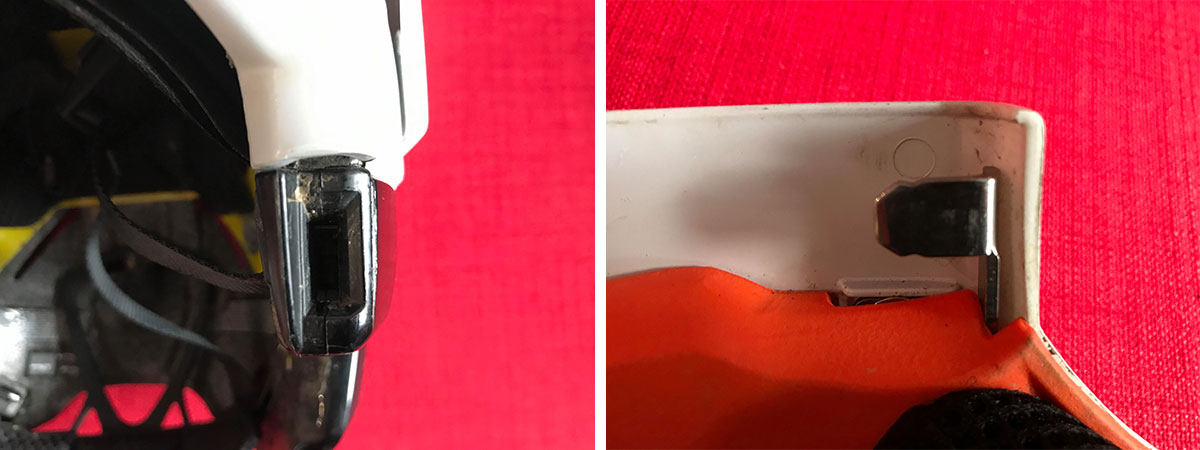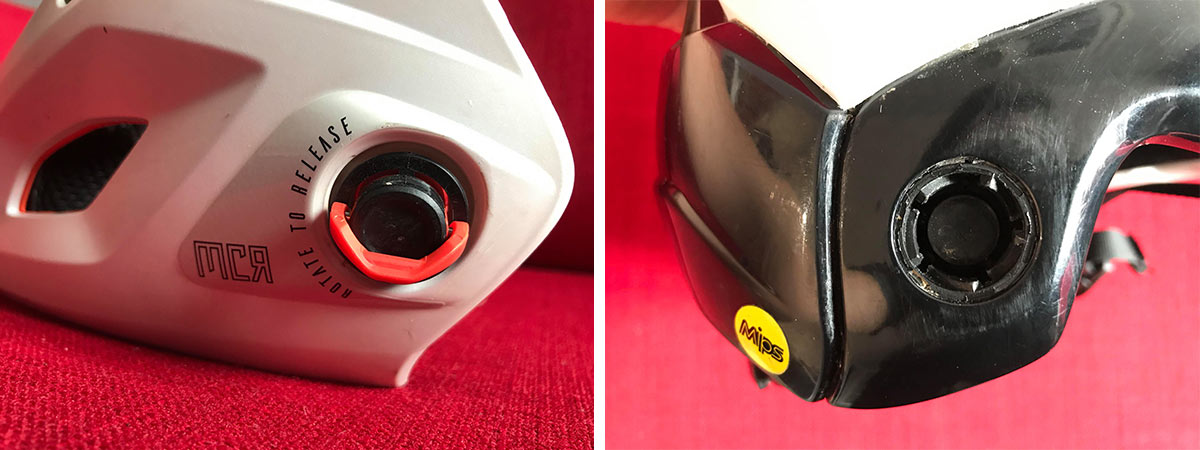$350 will get you the all-new MET Parachute MCR helmet; 2 helmets in one, the Parachute MCR is a convertible full face ASTM-certified enduro helmet that looks as robust as any downhill helmet. The original Parachute was super popular as a lightweight and well ventilated full face helmet, great for bike park laps and hot alpine days. Despite looking removable, the chin bar was actually fixed to the main body of the helmet. For 2020, the reimagined Parachute MCR gains 114g, bringing it to 840g (size medium).
For that small weight penalty, the helmet is now fully convertible, has a magnetic chinbar release (MCR) and chinstrap from FIDLOCK, a BOA fit system and MIPS C2 to protect your head on rotational impacts. For the full tech break down on the MET Parachute MCR, click here. I’ve raced the best part of my 2019 enduro season with this helmet; to hear how I got on with it, stick around.
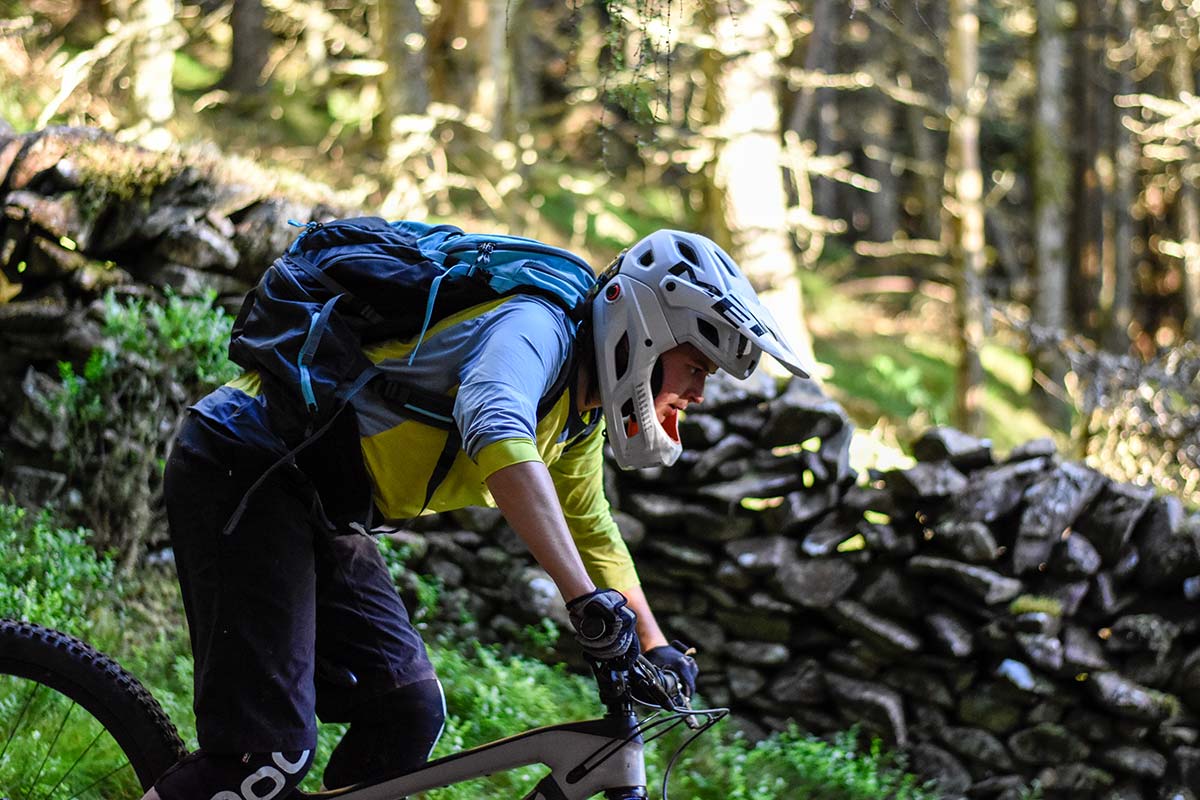
MET Parachute MCR full face convertible enduro helmet
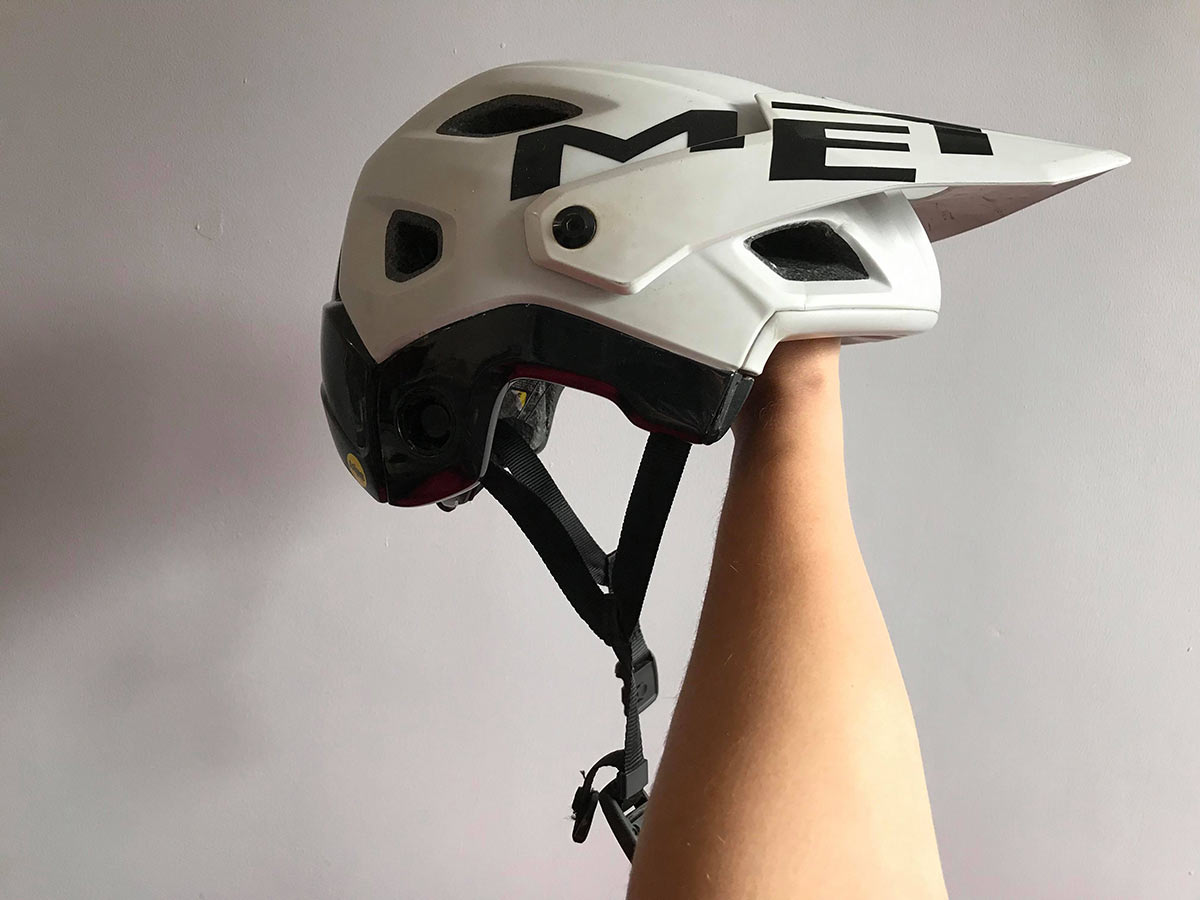
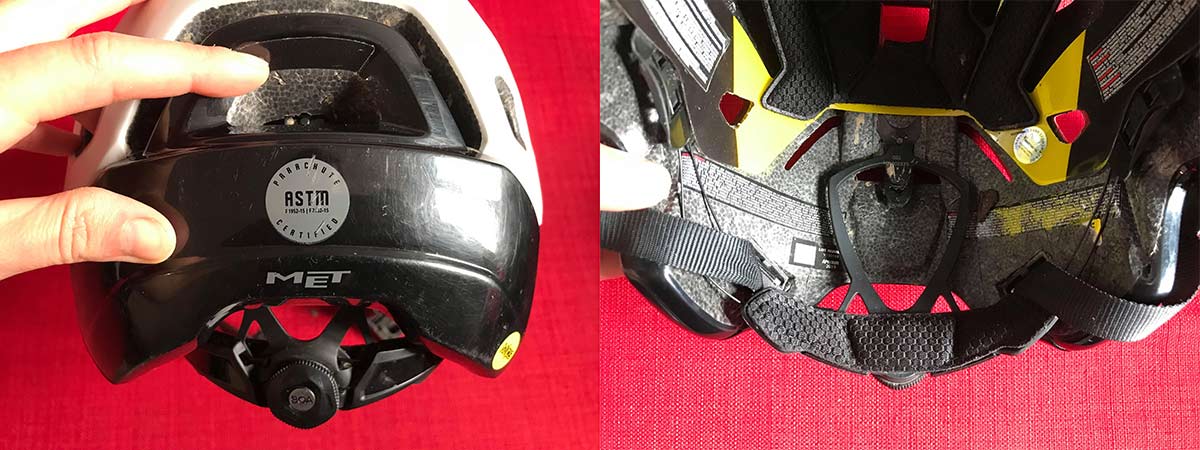
Firstly, i’d like to say that this helmet is wonderfully comfortable. Of course, everyone has a different shaped head, and you should definitely check the fit before buying any helmet instead of relying on a manufacturer’s size guide. However, in this case, the manufacturer’s size guide was pretty accurate for me. My head circumference is 52cm and I opted for the small which covers a head circumference range of 52cm to 56cm.
Video Review: MET Parachute MCR (Update)
The BOA adjustment system offers 61 click increments so the helmet can be precisely as tight as you want it. It is fair to say that I feel super secure with this helmet, with the BOA system holding its integrated MIPS system firmly on my head.
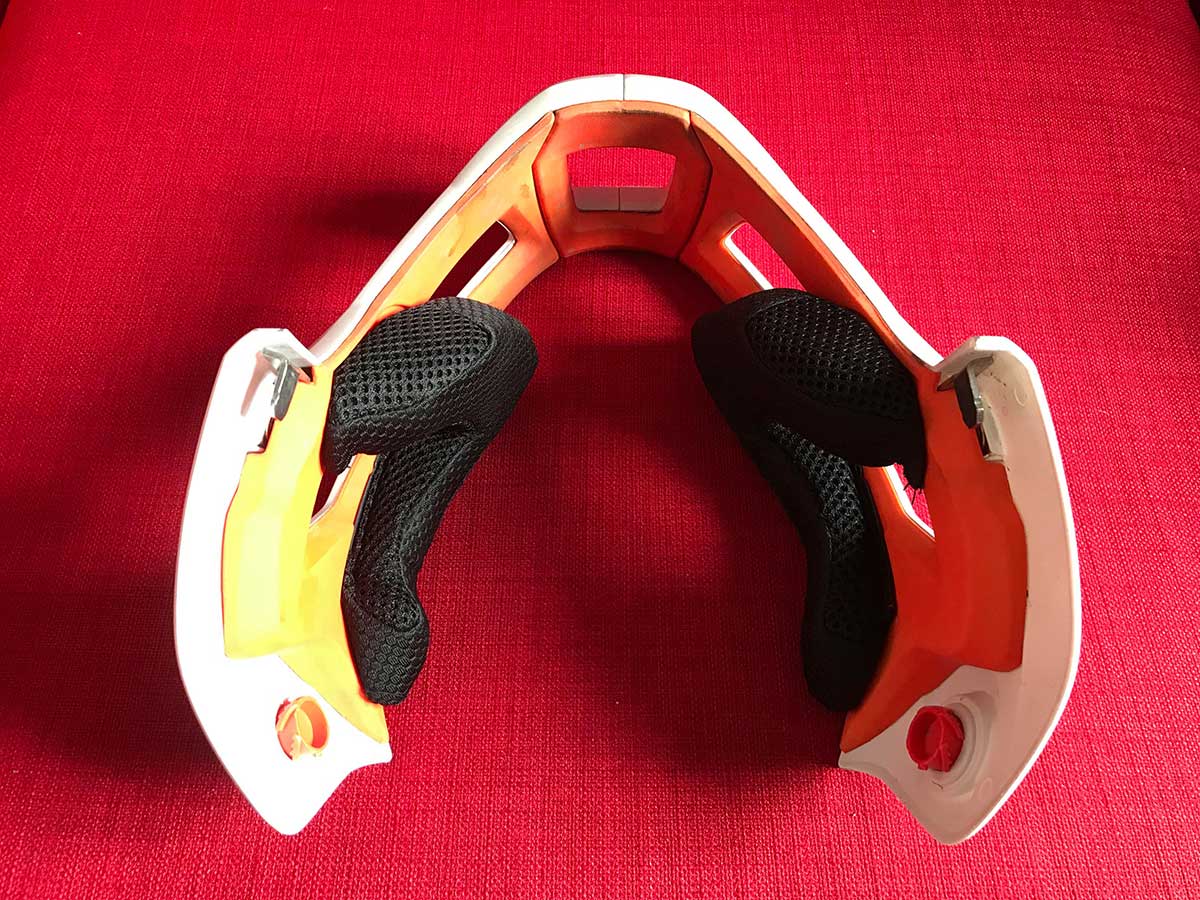
Also in relation to fit, the pads inside the chinbar are available in two sizes. The pads themselves could do with a little more antibacterial treatment, however they are completely removable and machine washable.
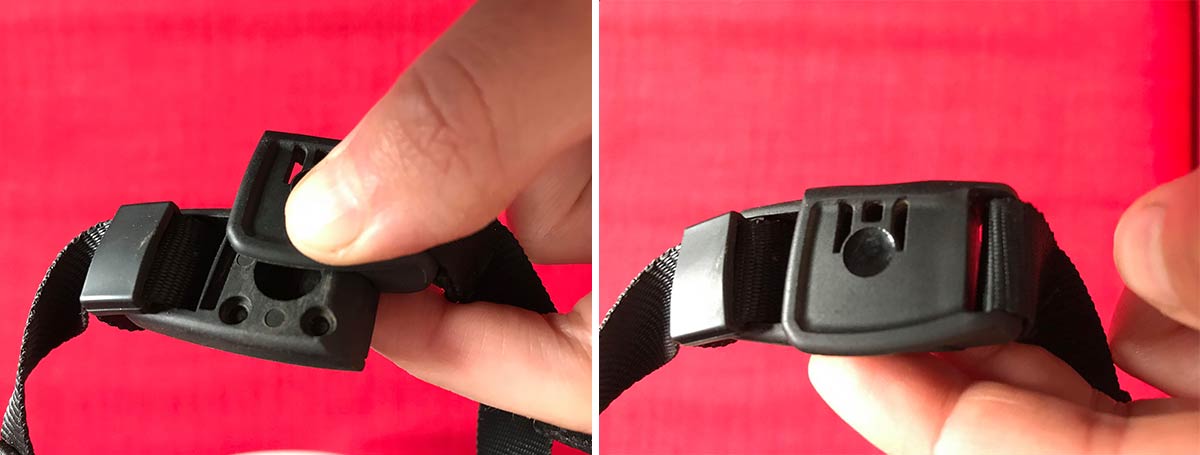
A big fan of anything FIDLOCK, I really like the magnetic chin strap. It results in minimal faffing and can be fastened with just one hand.
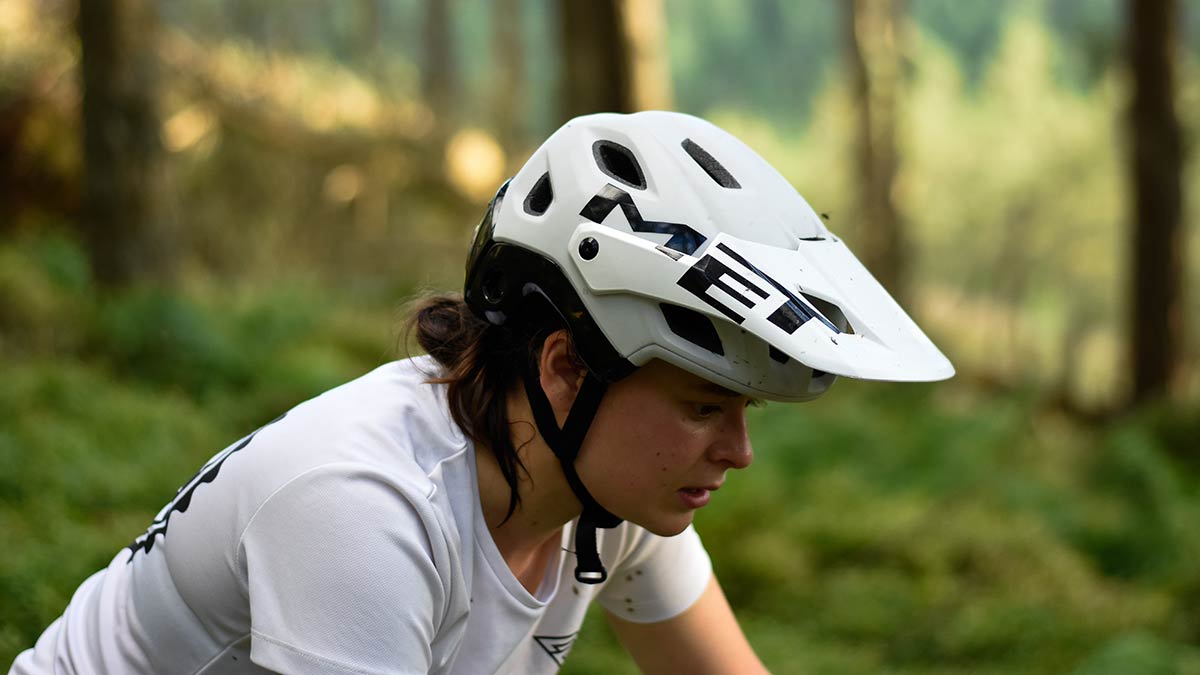
On many bicycle helmets the join position of the side straps is adjustable but the Parachute MCR doesn’t offer this adjustability. In my case the joint position is perfect, sitting just underneath my ear lobes, which is very important in preventing the helmet from popping back off your forehead during impact.
The chinstrap isn’t the only piece of FIDLOCK real estate on the Parachute MCR. The chinbar release itself is a FIDLOCK design too, utilising a magnet to help the rider attach the chin bar without removing the helmet.
The chinbar attaches to the main body of the helmet via 4 connection points; 2 metal pins slide into fixings on either side of the head near the temple region, while two rotatable circular plastic FIDLOCK ‘pins’ lock the chinbar into place just behind the jaw region.
This all looks very complex but is actually one of the better, more user friendly, mechanisms that I have come across for a convertible helmet. I’ll admit that I spent a good 30 minutes frustratedly learning to attach the chinbar without taking the helmet off – it isn’t super easy to get the hang of as the chin bar is ever so slightly wider than the main body of the helmet, so you have to flex it inwards a little to line up the metal pins with the fixings. The Once you’ve got that though it is fairly straight forward from there; the magnetic system then automatically locks everything into place – check out the video below to see the process.
The Bell Super MIPS helmet is another very popular convertible helmet on the market. With the Bell helmet, it is also possible to affix the chinbar without removing the helmet but it can be quite easy to attach the chinbar improperly without noticing, until a friend lets you know that one of the pins is sticking out. With the MET Parachute MCR there is no danger of this happening due to the magnetic FIDLOCK system. The system has generally worked really well for me however, when i’m rushing to remove the chin bar i find the orange twist paddles on the FIDLOCK mechanism are a little flexi and flimsy, and sometimes pop out of the pins that hold them in place. I imagine they could snap easily if someone more heavy handed was to twist them sharply.

Overall, I feel the MET Parachute MCR is a quality mountain bike helmet. It has served me well as an enduro rider; I snap the chinbar into place at the top of a race stage, then unclip it and attach it to my EVOC riding pack for more ventilation on the climbs. The visor has two positions, a low and a high; in the high position there is enough room to seat a pair of MTB goggles when you aren’t using them to shield your eyes.
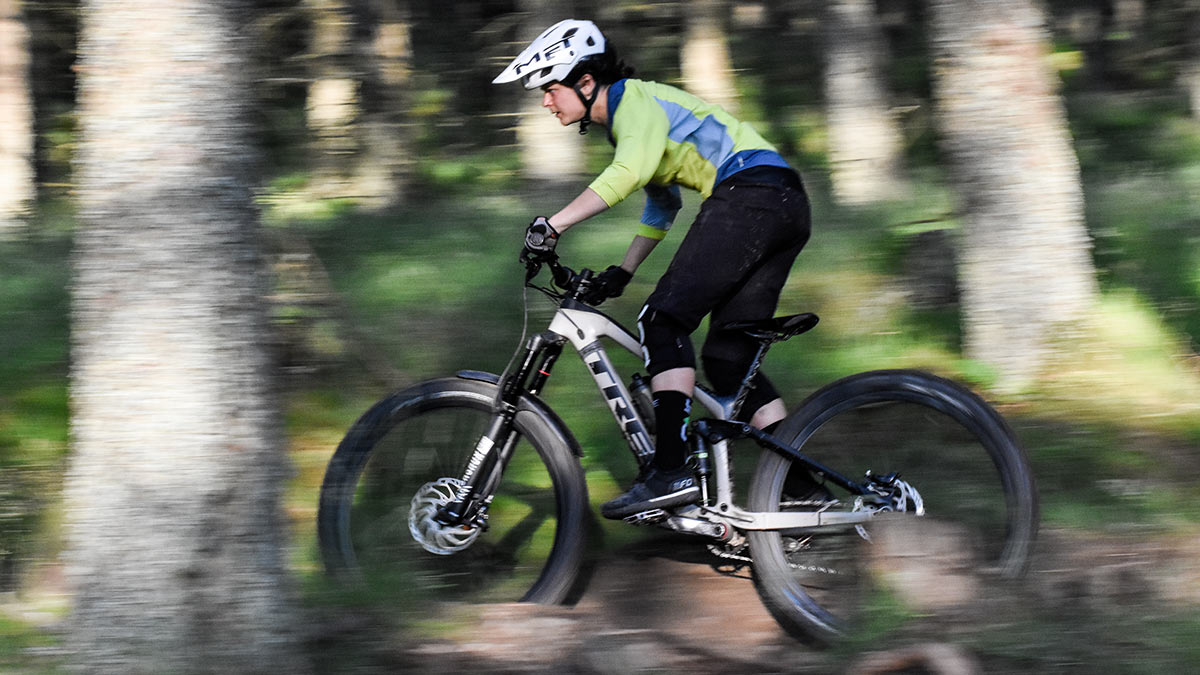
Pricing and Availability
The MET Parachute MCR helmet is certified to ASTM F1952-15, ASTM F2032-15, CE EN 1078:201, US CPSC 1203 and AS/NZS 2063:2008. It is available in sizes small, medium and large, covering head circumferences from 52cm to 61cm, and will set you back $350.
